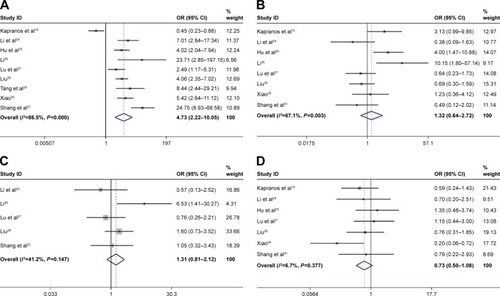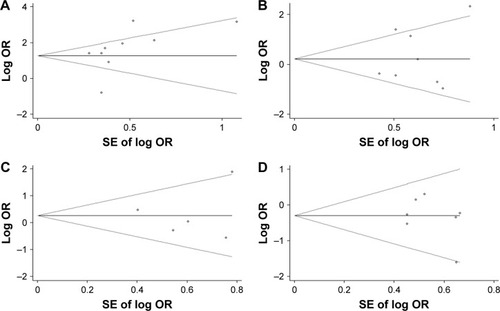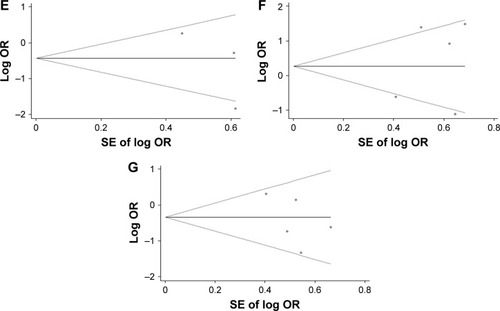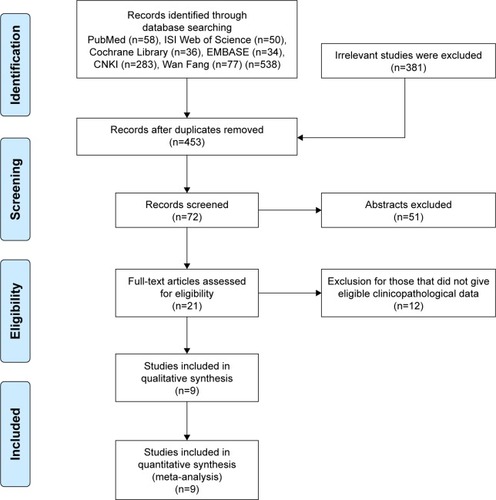Figures & data
Table 1 Characteristics of studies included in the meta-analysis
Figure 2 Forest plot of studies evaluating the relationship between HSP27 expression and clinicopathological features: (A) expression; (B) lymph node metastasis; (C) serosal invasion; (D) gender; (E) tumor size; (F) differentiation; (G) TNM stage.
Abbreviations: OR, odds ratio; CI, confidence interval.


Table 2 HSP27 clinicopathological features for gastric carcinoma
Figure 3 Begg’s publication bias plot for HSP27 related studies: (A) expression; (B) lymph node metastasis; (C) serosal invasion; (D) gender; (E) tumor size; (F) differentiation; (G) TNM stage.


Table 3 Subgroup analysis of expression, lymph node metastasis, tumor size, and differentiation

